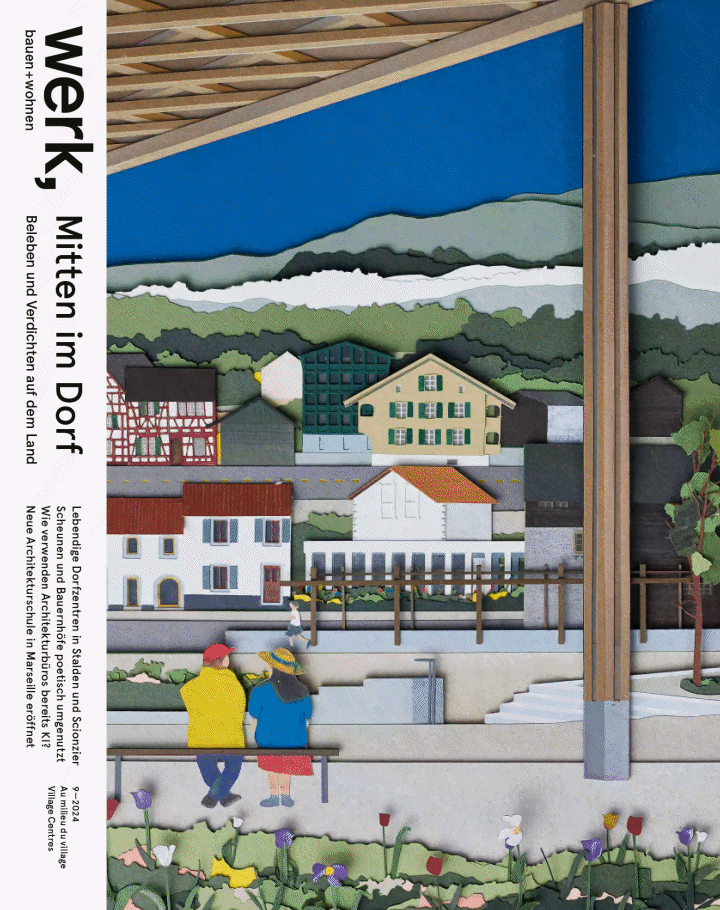werk, bauen + wohnen 9–2024

Grüezi, Salut, Salve!
In the village, all is right with the world. People know each other, greet each other and, where necessary, they help each other, too. At least that is the widespread belief about the difference to life in the anonymous city. Life in the village brings community and closeness—whether one wants it or not.
But if people are to know and greet each other they must be able to meet each other— and on the village square that is no longer so easy. In many places the traditional village meeting points are vanishing—the village inn, the village shop, or the post office counter. They have moved to larger municipalities or have gone digital. The new routes lead out of the village, commuters flock to the cities, to work or to school only to disappear in the evening into their little houses on the edge of the village. The path into the village is taken less often, the centre suffers and needs attention. Scionzier in Haute-Savoie and the village of Stalden in Upper Valais offer good examples in this regard. They equip their centres with new qualities, they create room for encounters at a large and small scale, at a big party or a casual neighbourhood chat.
In addition, the research for this issue confirms that there is not just one kind of village. Although in many places similar forces are at work, the realities, and the areas where action is needed differ. In the Fribourg region empty agricultural buildings await new uses. The young office of Bard Yersin transforms them into apartments, in the little village of Romanens they extended a cheese dairy that makes agri culture visible in the village and encourages people to buy local produce. In Berlingen the will to increase the density of the centre conflicts with regulations intended to protect the appearance of the place. Applications to build have been regularly rejected as they failed to meet ISOS requirements.
We asked the mayor to sit down together with the head of the construction department of Sempach, a winner of the Wakker Prize, to exchange their experiences. In the discussion we learned about the special path being followed by Berlingen and discovered that out of strict regulations innovative solutions can develop which, despite all the differences, could indicate a direction for many villages. — Jasmin Kunst, Christoph Ramisch